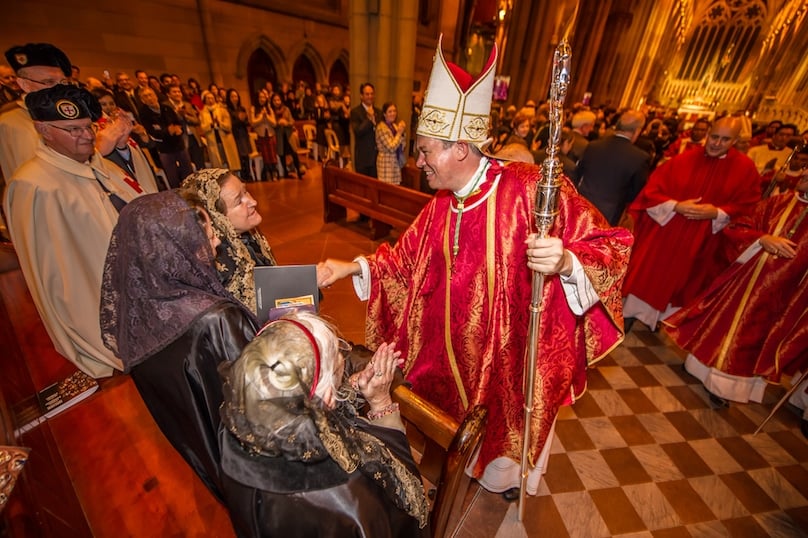
I recently attended the ordination of two bishops and was intrigued by several items they received in the ceremony. Can you tell me the meaning of such things as the mitre and crosier? Also, since this was called an ordination, did the bishops receive a new sacrament?
I will tell you about all the main items of bishops’ insignia, starting with the skull cap, or zucchetto. This small round cap, worn towards the back of the head, dates to the 13th century and developed to cover the tonsure, the part of the back of the head that was shaved when a man entered the clerical state.
It varies in colour according to the rank of the bishop, with the Pope wearing white, cardinals red and bishops violet. Priests may also wear the skull cap and theirs is black.
It can be used at any time but is removed in Mass during the Eucharistic Prayer.
Another item which the bishop can use at any time is the pectoral cross. The name “pectoral” comes from the Latin word for chest since the cross is worn on a chain hanging down over the bishop’s chest. The cross of Christ was the instrument of our redemption and it reminds the bishop of his duty to be generous in sacrificing himself for the flock entrusted to his care.
In the ordination ceremony the new bishop is given a ring, which symbolises his spiritual marriage to the Church and his duty to be faithful, in imitation of Christ, the bridegroom of the Church. The ring as an official part of the bishop’s insignia was first mentioned early in the seventh century and it came to be of general use in the ninth and 10th centuries. The prayer said in conferring the ring reads: “Receive this ring, the seal of fidelity: adorned with undefiled faith, preserve unblemished the bride of God, the holy Church.” The ring is worn on the fourth finger of the right hand.
Next the bishop is given the mitre, a large pointed head covering, with two short lappets or flaps hanging down over the back. Its name comes from a Greek word meaning turban.
It is worn only in more solemn ceremonies like the Mass, processions, etc., and is removed for the prayers. It is usually white in colour. It has its origin in the Byzantine Empire where officials of the court wore a head covering known as a camelaucum.
This later developed into a crown and is the origin of the papal crown known as the tiara, which comes to a point at the top. In the Church the mitre dates back to the 11th century, when it was worn only by the pope. In the 12th century it came to be used also by bishops. The prayer said on conferring the mitre makes reference to the crown: “Receive the mitre, and may the splendour of holiness shine forth in you, so that when the chief shepherd appears you may deserve to receive from him an unfading crown of glory.”
After the mitre the new bishop is given the crosier, or shepherd’s crook, which symbolises his duty to be diligent in watching over the flock entrusted to him. The prayer says: “Receive the crosier, the sign of your pastoral office: and keep watch over the whole flock in which the Holy Spirit has placed you as bishop to govern the Church of God.” The crosier is first mentioned as part of the bishop’s insignia in the seventh century.
Your question about whether the ordination of a bishop constitutes the conferring of a new sacrament is an interesting one.
As we know, there are three degrees of Holy Orders: bishops, priests and deacons. The man is first ordained a deacon, then a priest and finally a bishop. While it might appear to anyone attending these ceremonies that there are three separate sacraments, the reality is that the sacrament of Holy Orders is only one, with three degrees. This has been the case since the beginning of the Church.
The degrees of bishop and priest are a participation in the priesthood of Christ, the head of the Church, and that of deacon is intended to help and serve the bishops and priests.
All three degrees are received through the one sacrament of Holy Orders. What is happening is that in each successive ordination ceremony the person is receiving the one sacrament in a progressively fuller way, enabling him to carry out more functions and conferring on him more responsibilities.
It is very important that we pray very much for all bishops, for they will have a great account to render in the judgment for the faithful entrusted to them.
